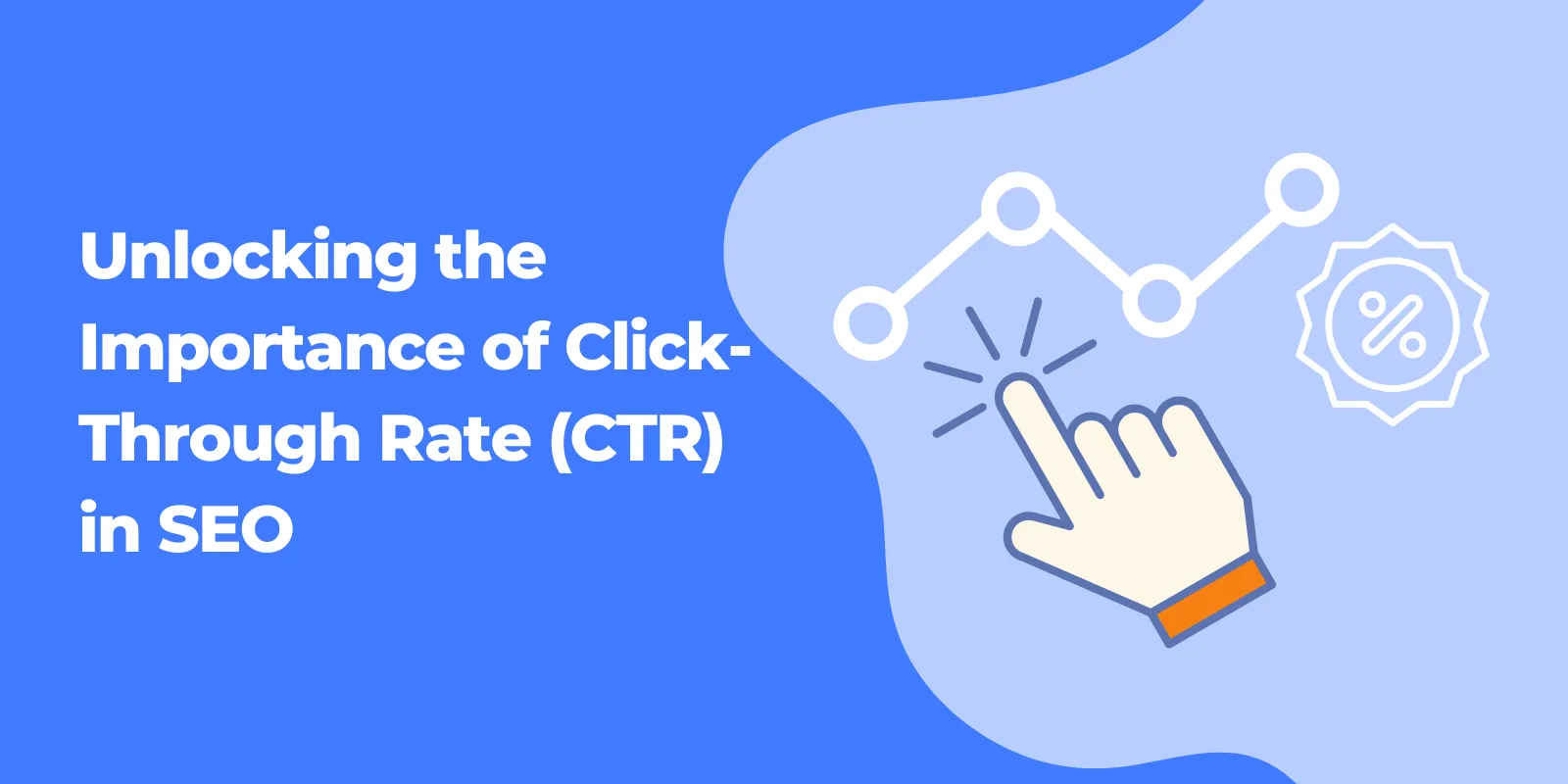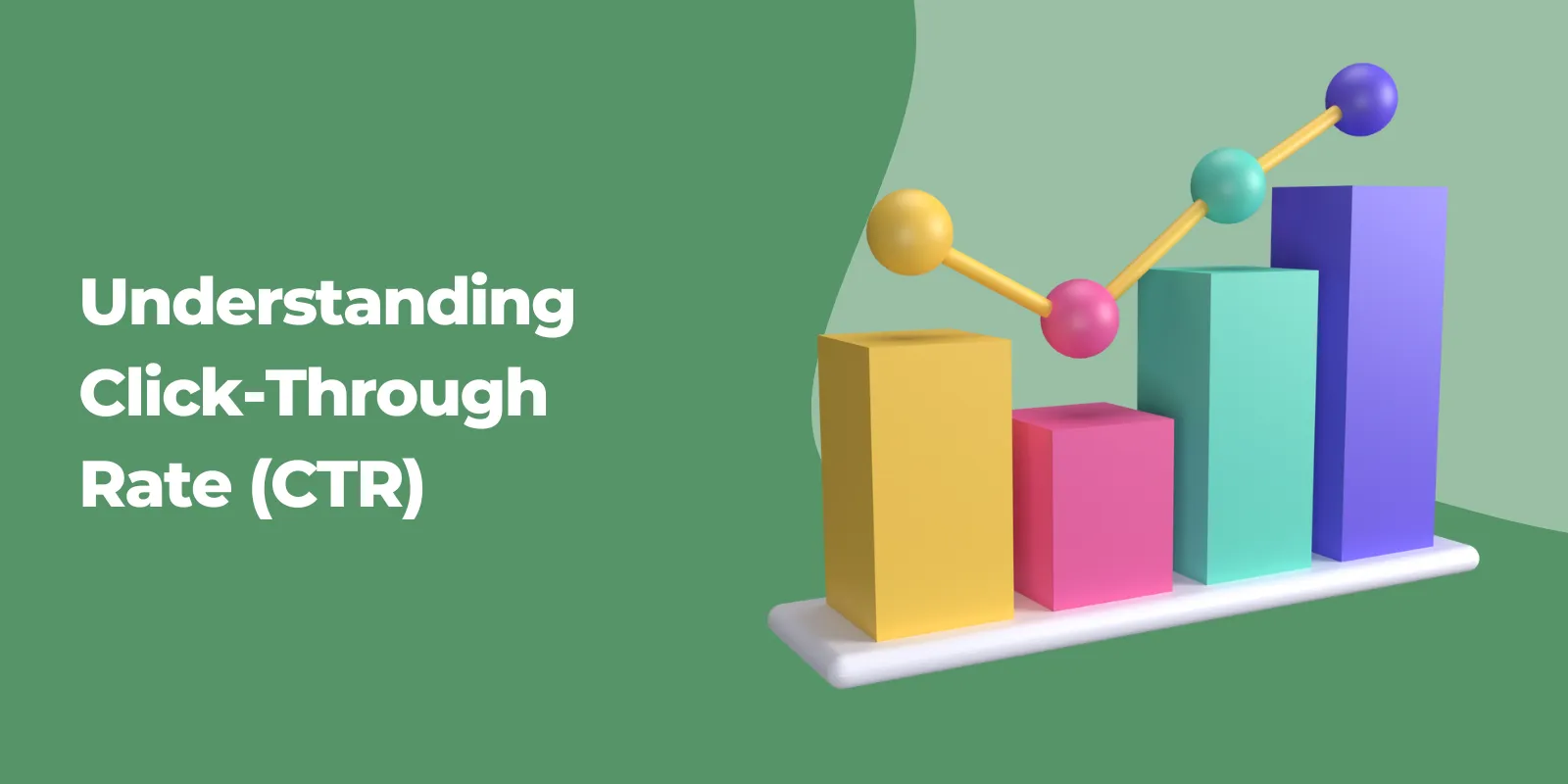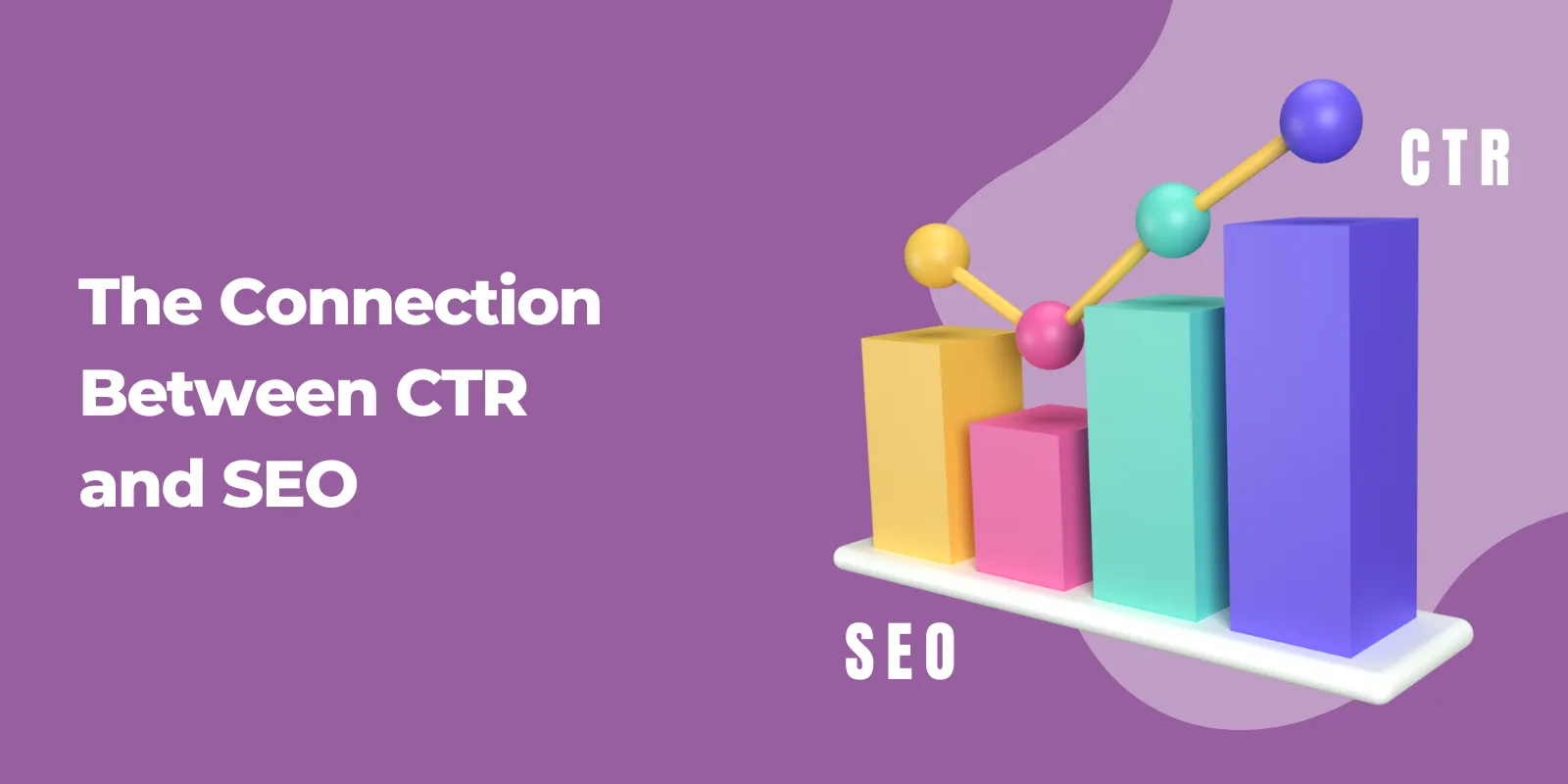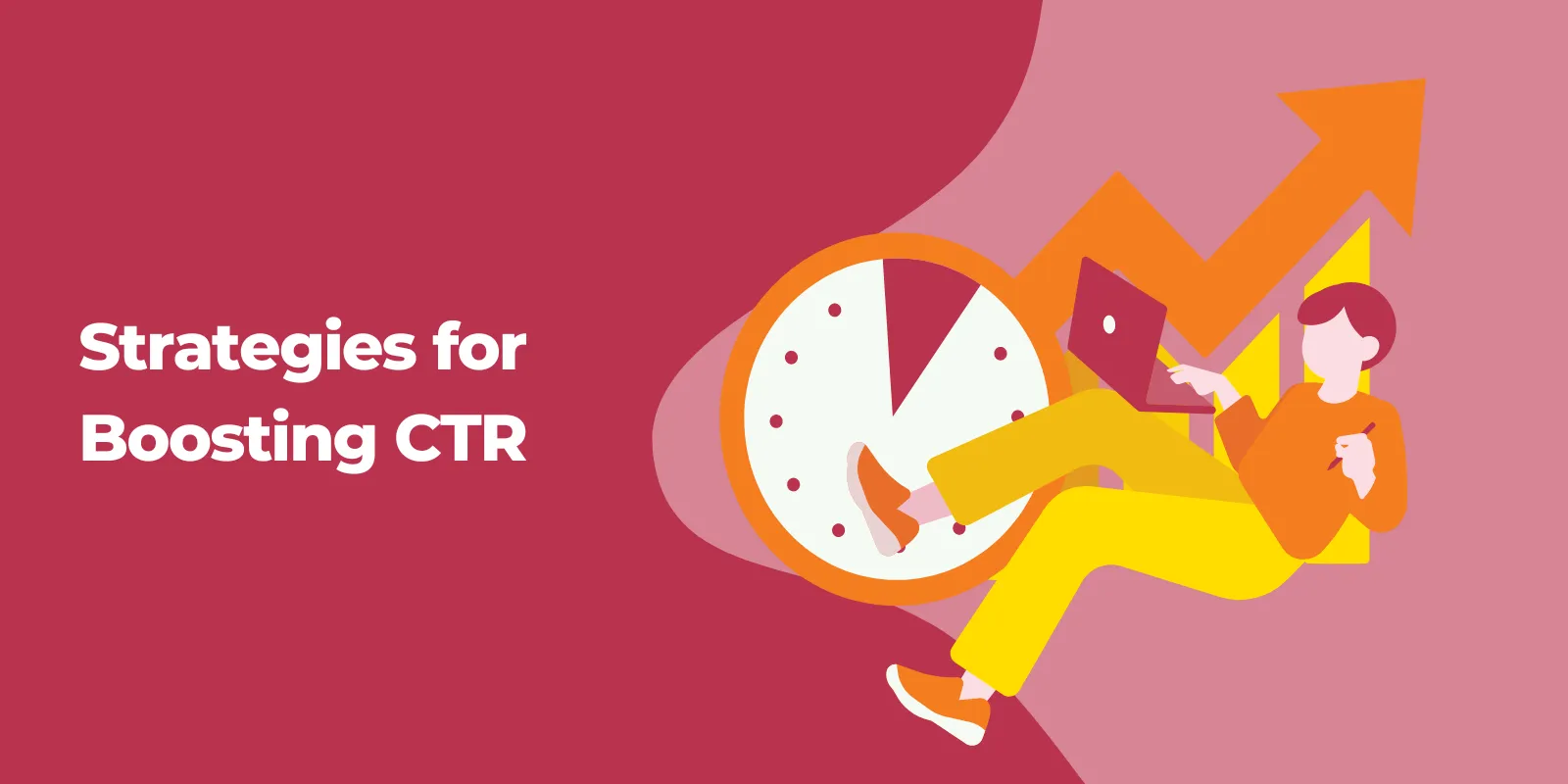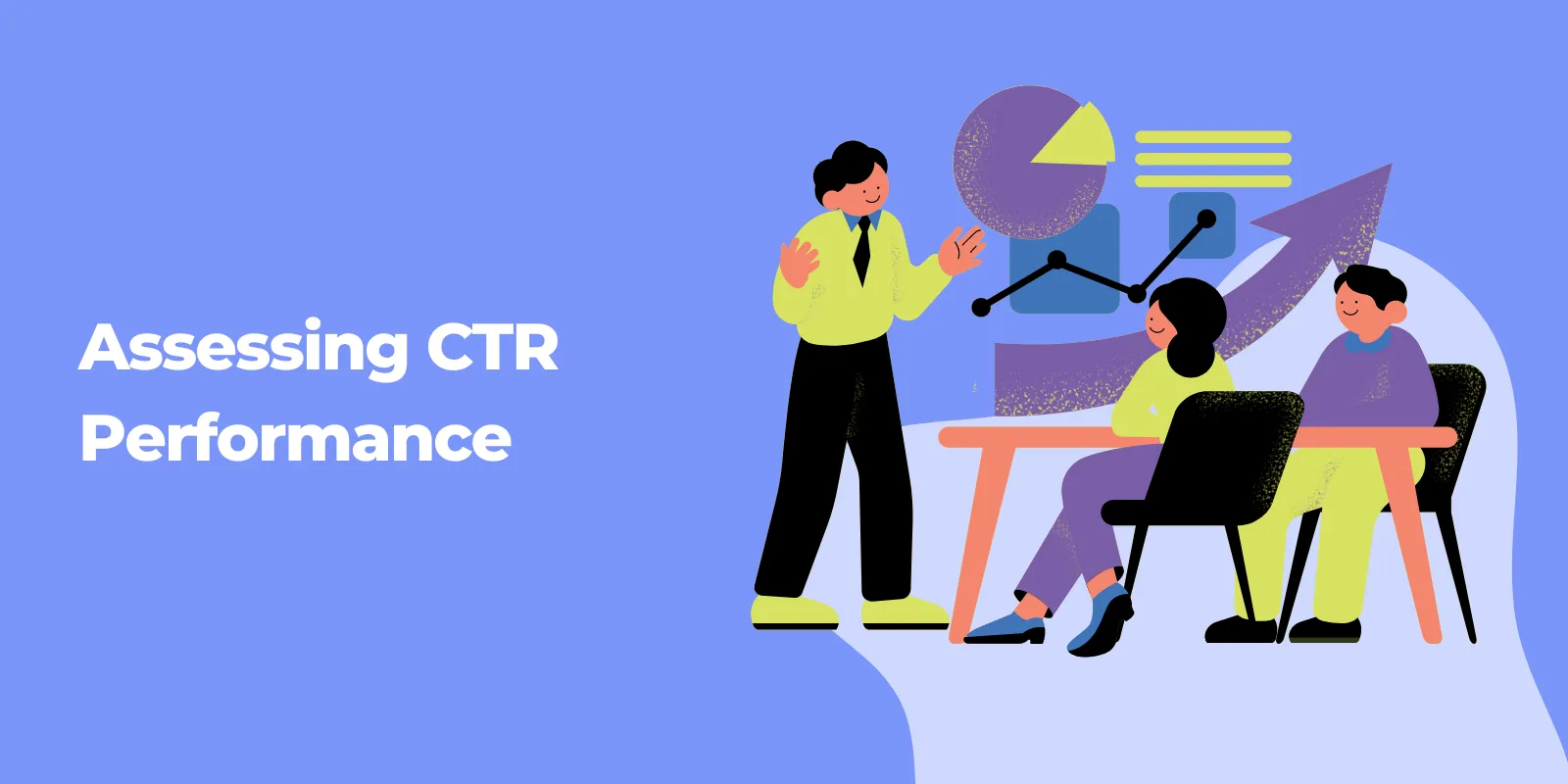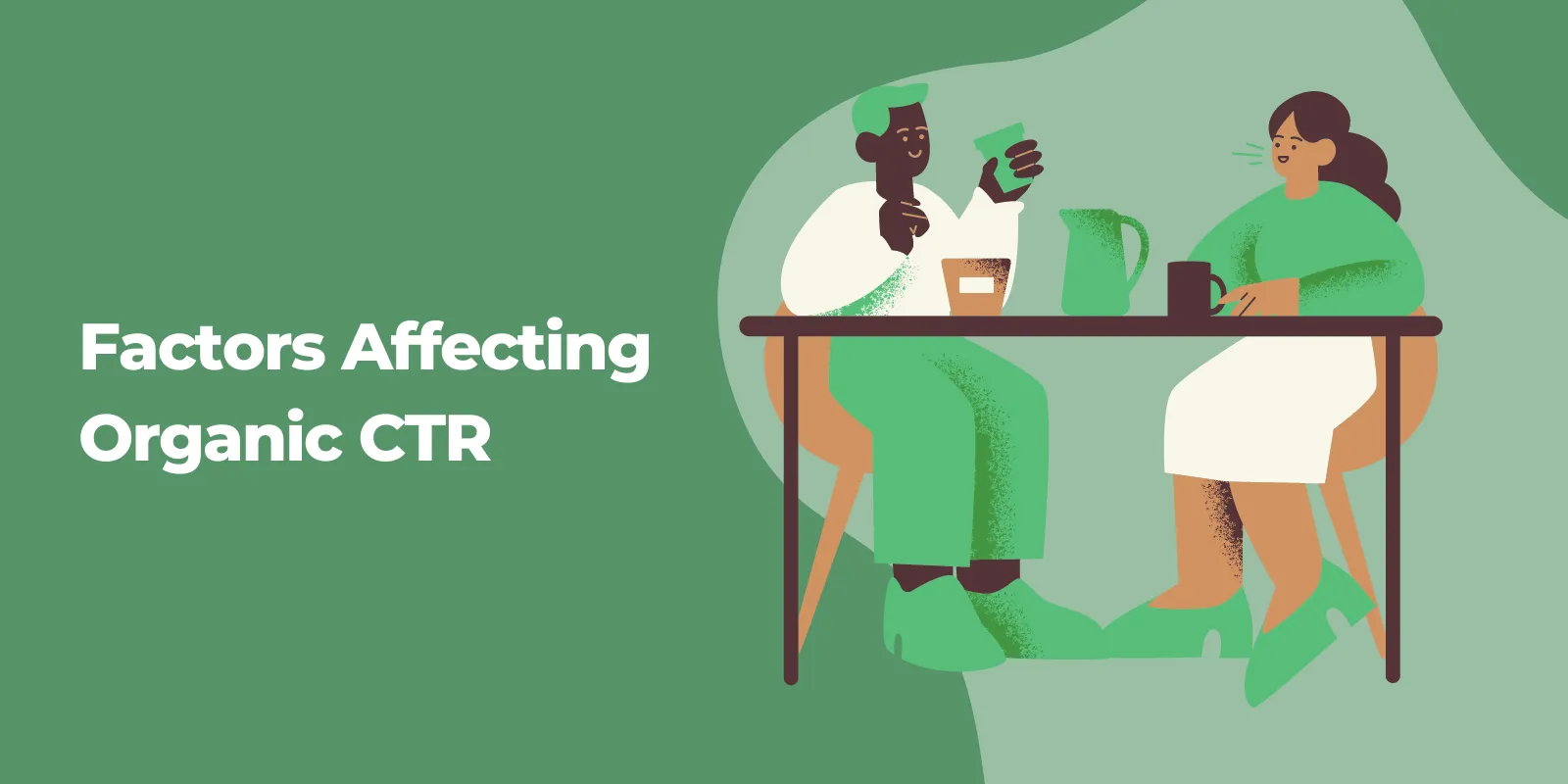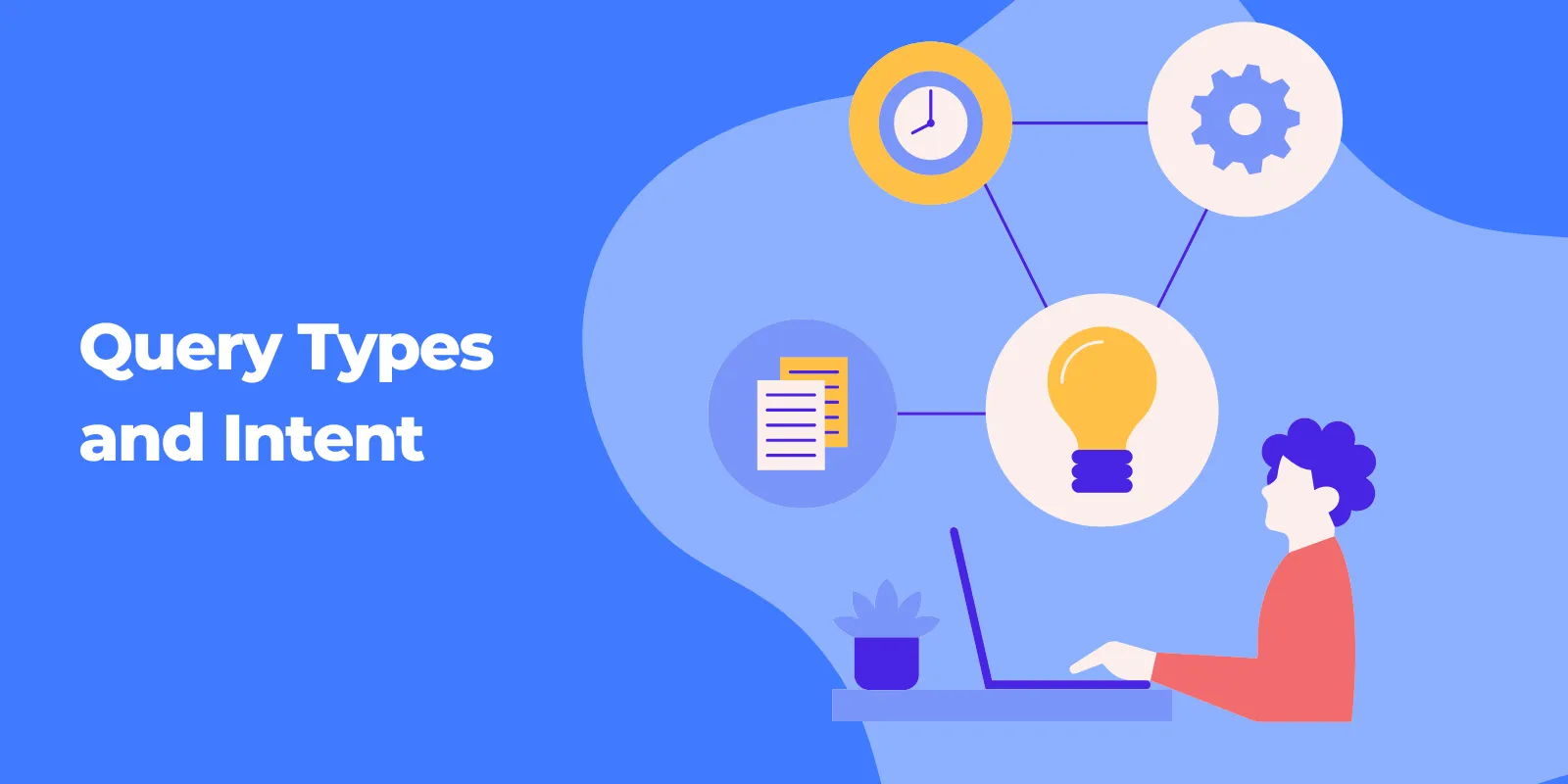Read on to discover the critical role that CTR plays in digital marketing and how it can significantly impact your website’s SEO performance.
Understanding Click-Through Rate (CTR)
In the digital marketing world, click-through rate (CTR) is a vital metric that measures user engagement. A high CTR indicates that your content is relevant and valuable to users, signaling to search engines that it should be ranked higher in search results.
But what exactly is CTR, and how does it relate to SEO? Let’s dive deeper into the definition and importance of CTR in the digital marketing landscape.
Definition and Calculation
The CTR, or Click-Through Rate, is a metric that gauges the effectiveness of hyperlinks. It calculates the ratio of users who actually clicked on the link compared to the total amount of people who viewed the link.
In other words, it answers the question: “Out of all the people who saw my link, how many actually clicked on it?” To calculate CTR, simply divide the number of clicks by the number of impressions (times the link was shown) and multiply by 100.
The result is expressed as a percentage, representing the proportion of users who clicked through to your content.
For example, if your link was shown to 1000 people and 50 of them clicked on it, your CTR would be (50 / 1000) * 100 = 5%. This means that 5% of users who saw your link found it interesting enough to click on it.
Understanding CTR is essential for evaluating the performance of your website and your digital marketing efforts.
Importance of CTR in Digital Marketing
CTR plays a significant role in various digital marketing channels, such as pay-per-click (PPC) campaigns, search engine optimization (SEO), and email marketing.
In the context of SEO, organic CTR refers to clicks originating from a Google search engine results page (SERP) as opposed to a paid advertisement.
CTR is essential for search engines, as it helps them generate more revenue through the pay-per-click model, and it impacts ad rank and Quality Score for advertisers.
Higher CTRs often result in better organic search rankings, as they signal to search engines that your content is relevant and engaging to users.
Measuring the CTR of ranking pages is an effective way to evaluate user engagement. This lets you know how many people out of the total number of users on a SERP actually visited those pages.
This information can help you optimize your content and SEO strategies to attract more clicks and improve your website’s overall performance.
The Connection Between CTR and SEO
Although CTR is not a direct ranking factor, it still has a significant impact on SEO performance. A high CTR indicates that users find your content relevant and engaging, which in turn can influence search engine algorithms.
This connection between CTR and SEO can be better understood by exploring the indirect impact of CTR on rankings and the role of user engagement and relevancy.
Indirect Impact on Rankings
CTR is not used as a direct ranking factor in Google’s search algorithm. However, it is still an essential metric for assessing the performance and health of a website.
A high CTR implies that your content is engaging, relevant, and meets the needs of users searching for specific information. This, in turn, can lead to better search engine rankings and more organic traffic to your website.
To maximize page optimization with CTR in mind, consider optimizing metadata, refining URLs, and taking advantage of SERP features. These tactics can not only improve your website’s CTR, but also have a positive impact on your overall SEO efforts.
User Engagement and Relevancy
CTR can provide valuable insights into user engagement and content relevancy. When users are engaged and find your content relevant, they are more likely to click on your page, leading to higher rankings in SERPs.
This highlights the importance of creating content that resonates with your target audience and meets their needs.
Understanding user behavior and creating content that caters to their search intent is crucial for achieving a high CTR and improving your website’s SEO performance.
By focusing on user engagement and relevancy, you can increase your chances of attracting more clicks and, ultimately, more conversions.
Strategies for Boosting CTR
To improve your website’s CTR and boost its SEO performance, several strategies can be employed, such as optimizing metadata, enhancing URLs, and leveraging SERP features.
In this section, we will delve into each of these techniques and provide actionable tips on how to implement them effectively.
Optimizing Metadata
Metadata optimization involves creating engaging title tags and meta descriptions that entice users to click on your search results.
The title tag is the first element that captures a user’s attention in Google Search. An engaging and relevant title tag can significantly improve your CTR and, consequently, your SEO rankings.
When crafting an effective meta description, think of it as an advertisement for your content. It should entice visitors to click on your website from the search engine results page and avoid repetition.
A well-crafted meta description can make your search snippet more relevant and appealing to users, encouraging them to click on your result and potentially leading to higher rankings on the SERP.
Enhancing URLs
Optimizing URLs can have a significant impact on your CTR and SEO performance. A well-structured URL not only looks more appealing in search snippets, but also helps users better understand the structure of your website.
By enhancing your website’s organic CTR, you can drive more traffic to your site without necessarily needing to improve your search ranking.
To create user-friendly and keyword-rich URLs, consider using descriptive words, keeping URLs concise, and employing hyphens to separate words.
Including relevant keywords in your URLs can also improve their SEO performance, making it easier for search engines to understand the content of your webpages.
Leveraging SERP Features
Utilizing rich snippets, sitelinks, and other SERP features can significantly increase your website’s visibility and clickability.
Optimizing your website for these features can enhance your search ranking and make it easier for potential customers to find your content online.
To take advantage of these features, ensure that your website’s structured data is correctly implemented, allowing search engines to display your content as a rich snippet or featured snippet.

Award-Winning
Sales Funnel & Website Expert
Ready for Revenue – Not Just “Traffic”?
- Websites that Work: Clean, fast, built to convert – no design fluff.
- Funnels that Sell for You: Step-by-step paths that turn clicks into paying customers.
- SEO That Hunts Buyers: Show up exactly when prospects reach for their wallets.
Additionally, consider implementing ad extensions such as reviews, locations, sitelinks, or call buttons in your PPC campaigns to increase your CTR.
Assessing CTR Performance
Tracking and analyzing CTR data is crucial for informing your SEO strategy and making data-driven decisions to improve your website’s performance. In this section, we will discuss tools for monitoring CTR and how to interpret the results to identify areas for improvement.
Tools for Monitoring CTR
Several tools are available for monitoring CTR, including Google Analytics, SEMrush, Ahrefs, and Moz. Google Search Console, in particular, offers a range of metrics to track CTR, such as impressions, clicks, and average CTR.
However, it is essential to note that Google Search Console may not be the most accurate tool for measuring CTR, so it’s crucial to cross-reference your data with other tools.
By monitoring your CTR using these tools, you can gain valuable insights into user engagement with your website and identify areas that may require optimization to improve your CTR and overall SEO performance.
Interpreting Results
To analyze CTR data effectively, consider looking for correlations between variables such as content type, content position in SERPs, and query type.
Additionally, take into account the context of your data, including the time of day, day of the week, and season, to detect any seasonal trends or changes in user behavior that may be impacting your CTR.
When evaluating your CTR results against industry standards, consider factors like content type, content position in SERPs, and query type.
A higher CTR generally indicates a higher conversion rate, but this is not always the case. By interpreting your CTR data and identifying areas for improvement, you can optimize your website to attract more clicks and improve its SEO performance.
Factors Affecting Organic CTR
After exploring the importance of CTR in digital marketing and SEO, it’s essential to understand the various factors that can impact organic click-through rates.
In this section, we will examine the influence of ranking position, search queries and user intent, and competition from paid ads on organic CTR.
Position in SERPs
The position of your content in SERPs is the primary factor that impacts the click-through rate of organic search results.
A study by Sistrix revealed that the first search result had a CTR of 30.8%, the second result had a CTR of 15.7%, and the third result had a CTR of 11.1%.
This demonstrates that there is a significant drop in CTR when transitioning from the first page to lower positions, particularly when reaching the second page and beyond.
To improve your ranking position and, consequently, your CTR, focus on optimizing your website’s content, metadata, and URL structure. By doing so, you can increase the likelihood of your website appearing in the top positions of SERPs and attracting more clicks from users.
Query Types and Intent
Different types of search queries and user intent can significantly affect your website’s CTR. For instance, long-tail keywords, which are more specific and targeted, can yield a higher CTR when ranking pages compared to general one-word or two-word search terms.
Similarly, branded search queries, where users search for a specific brand or product, tend to have higher CTRs in the top positions than non-branded ones.
To optimize your website for various query types and user intent, ensure that your content is relevant, engaging, and addresses the needs of your target audience.
By doing so, you can attract more clicks and improve your website’s overall CTR and SEO performance.
Competition from Paid Ads
The presence of Google Ads and other paid advertising can also impact your website’s organic CTR. While paid ads may contribute to boosting the click-through rates of organic search results, organic results still retain a higher CTR than paid search results.
To compete effectively with paid ads, focus on optimizing your website’s content, metadata, and URL structure to improve your organic search performance.
Additionally, consider implementing strategies like PPC ad extensions to enhance your CTR in paid campaigns. By combining both organic and paid search strategies, you can maximize your website’s visibility and clickability, leading to better overall SEO performance.
Frequently Asked Questions
Why is CTR important for SEO?
CTR is an essential factor for SEO success, as it reveals how engaging and relevant your pages are to your users. By providing you with an indication of how successful your organic listings are at attracting visitors, CTR helps you optimize your website for greater organic visibility and higher ranking in the SERPs.
Optimizing your website for CTR can help you achieve higher rankings in the SERPs, as well as increased organic visibility. This can be done by creating content that is engaging and relevant to your users.
Does CTR matter for SEO?
Yes, CTR does matter for SEO because it indicates the amount of engagement a website receives from its users. If the CTR is low, it can mean that your SEO efforts are not working effectively or that your content needs to be improved.
Therefore, monitoring and optimizing your CTR should be part of any successful SEO strategy.
What is CTR and why is it important?
CTR (Click Through Rate) is the number of clicks on a link, or an ad, divided by the number of times it was seen. Having a good CTR can be an indicator of success in various marketing channels, such as email, search engine, and social media campaigns, since it measures how many people are engaging with your content.
In essence, a higher CTR means that your content is more effective in getting people to take action.
What is the purpose of a clickthrough?
The purpose of a clickthrough is to measure the effectiveness of digital marketing campaigns by tracking how often individuals who view an ad or listing subsequently click on it. CTR provides insights into how well keywords and ads are performing and helps advertisers identify how to best reach their target audiences.
Conclusion
In conclusion, click-through rate (CTR) is a crucial metric in digital marketing and plays a significant role in search engine optimization.
By understanding the factors affecting CTR and implementing strategies to optimize your website’s metadata, URL structure, and SERP features, you can improve your website’s CTR and SEO performance.
Remember to track and analyze your CTR data regularly to identify areas for improvement and make data-driven decisions that can propel your website to the top of search engine results pages.
